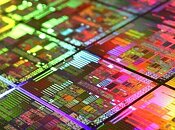
NVIDIA AI Expected to Transform $10 Trillion Healthcare & Life Sciences Industry
At yesterday's J.P. Morgan Healthcare Conference NVIDIA announced new partnerships to transform the $10 trillion healthcare and life sciences industry by accelerating drug discovery, enhancing genomic research and pioneering advanced healthcare services with agentic and generative AI. The convergence of AI, accelerated computing and biological data is turning healthcare into the largest technology industry. Healthcare leaders IQVIA, Illumina and Mayo Clinic, as well as Arc Institute, are using the latest NVIDIA technologies to develop solutions that will help advance human health.
These solutions include AI agents that can speed clinical trials by reducing administrative burden, AI models that learn from biology instruments to advance drug discovery and digital pathology, and physical AI robots for surgery, patient monitoring and operations. AI agents, AI instruments and AI robots will help address the $3 trillion of operations dedicated to supporting industry growth and create an AI factory opportunity in the hundreds of billions of dollars.
These solutions include AI agents that can speed clinical trials by reducing administrative burden, AI models that learn from biology instruments to advance drug discovery and digital pathology, and physical AI robots for surgery, patient monitoring and operations. AI agents, AI instruments and AI robots will help address the $3 trillion of operations dedicated to supporting industry growth and create an AI factory opportunity in the hundreds of billions of dollars.








